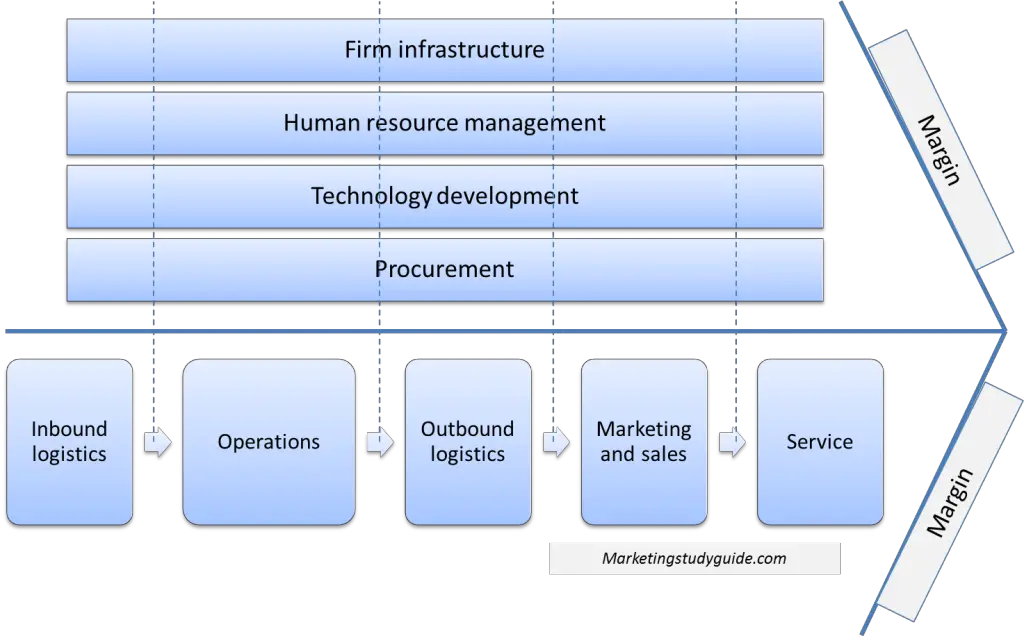Michael Porter outlined the value chain model in his book “competitive advantage”.(Here is a link to Google books for this textbook.) Porter’s Value Chain is a model that is sometimes included in a marketing principles textbook, but is more commonly found in a book on marketing strategy.
Using Porter’s Value Chain
The value chain is a model that is designed for a company to try to identify where they have a competitive advantage.The model breaks firms activities into nine different categories – of primary activities and support activities, as shown in the following model. As you can see, the model has an arrow shape to it, leading to margin (a measure of profitability).
For organizational structure purposes
It is possible to use Porter’s Value Chain in order to design the overall organizational structure. As you can see in the model, different areas or functions of a business are outlined. The company needs to think about the most appropriate way to structure – that is, integrate or separate – these activities in their operations, depending upon how these functions are linked together.
As highlighted in the model, the support areas of human with source management, infrastructure, technology development and procurement all have some overlap to primary activities. Generally, they are not directly engaged in the production and sale of products to the end consumer, but they exist to support the areas and functions that do.
Therefore, a firm may be able to create a competitive advantage through the appropriate design of their organization and alignment of the support activities with the more critical primary activities.
For competitive advantage purposes
The main purpose of Porter’s Value Chain is to try and identify areas of competitive advantage for the firm. Normally, a firm’s competitive advantage will lie inside particular activities and functions – rather than the firm overall.
By looking at each function/activity on a separate basis, the organization can work out or exploit functional areas where they have some form of differentiation or are able to conduct the activity on a superior basis, relative to their competition.
Example of Porter’s Value Chain
Probably the best way to think about using Porter’s Value Chain is to consider an example.
Coca-Cola example
For example, Coca-Cola has significant logistics benefits – primarily outbound logistics in Porter model – and they also have a strong brand, which would fall under the sales and marketing area of the model.
In terms of outbound logistics, what Coca-Cola is very good at is ensuring that thousands of retailers – across a whole range of industries – are consistently kept stocked with a variety of their products and products are delivered in a timely manner and with a very cost efficient transport and delivery process.
This gives the advantages of strong retailer relationships, continued customer loyalty – as product is always available and at a reasonable price.

